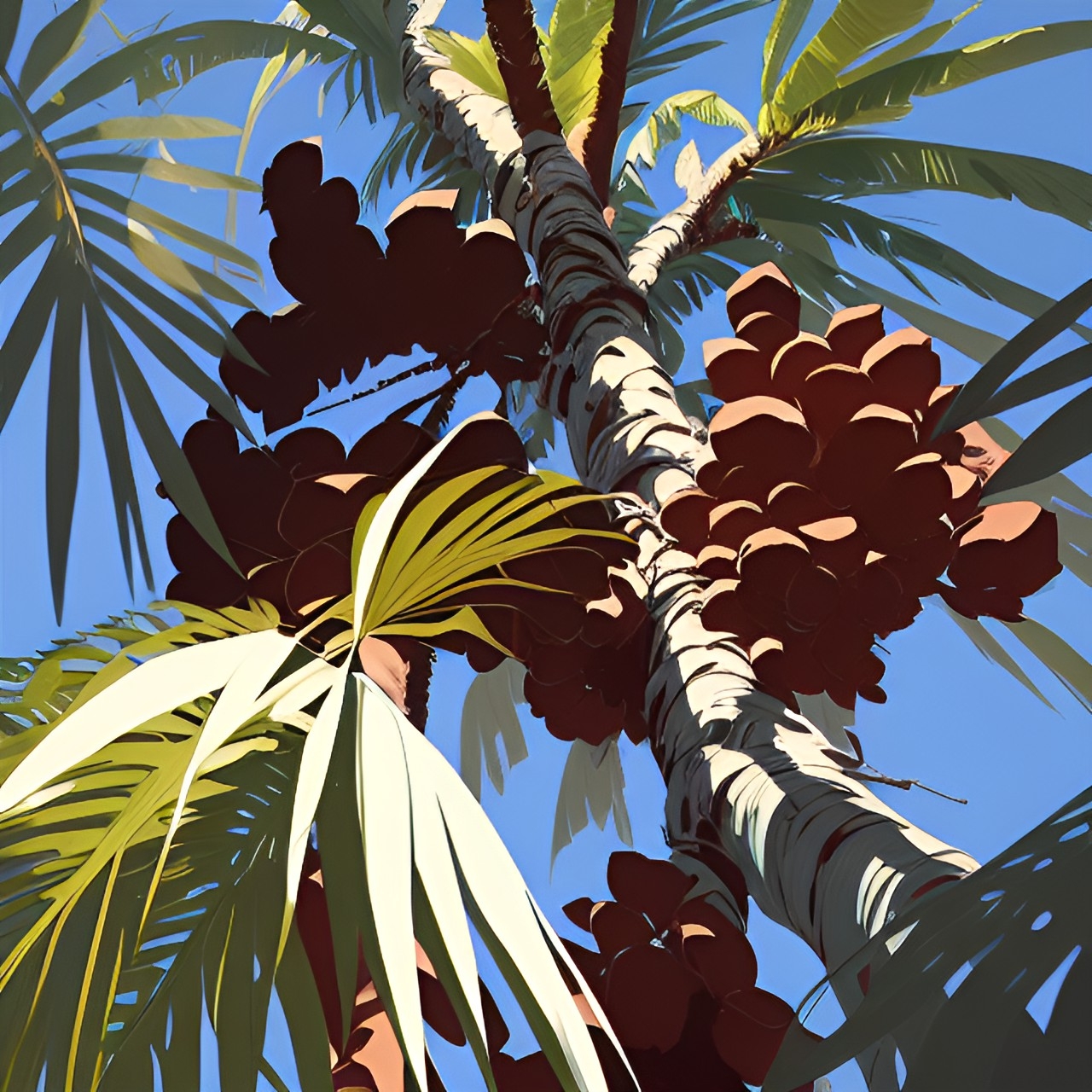Mawa Palm
Your face blisters under the unrelenting rays of Sahra' al-Shams, the Isik Gozyaslari gum in your mouth nearly tasteless after your solitary trek through the ergs. You realize you should have been looser with your coin, should have sprung for a Shamsi Camel and a guide. A knot forms in your stomach as the panic sets in—will it be the heat or radiant sickness that takes you? Yet just before you have a chance to swallow this grim reality, bright orange fronds break over the horizon and your legs buckle at the welcome sight: a Mawa Palm! This is a hardy and widespread palm tree native to northern Alkelbulan. It grows in areas with some groundwater or rocky hills, found alongside rivers and within wadis and oases. It's Kaithur is simple but vital, leaving it totally immune to fire and solar energy, natural or magical. In this way, Mawa not only protects those in its shadow from harsh sunlight, it also but guards against wildfire and unseen radiation. For this reason, Mawa leaves and wood are harvested to craft clothing, buildings and tools which offer the same resistances.
|
Rithaldis' Shield
Thanks to Rithaldis' Shield, Mawa are immune to damage or ill effects from both radiant magic and naturally occurring radiant energy including radiation.
Flithmar's Shield
Thanks to Flithmar's Shield, Mawa are immune to negative effects and/or damage from all flame magic and naturally occurring flames. Fireproof.
|
Anatomy |
|
Habitat |
Mawa Palm can tolerate temperate climates but prefers tropical habitats above 28 C (82 F). It grows wild in places with low rainfall but can tolerate wetter environments as long as drainage is good. They need a sunny, well drained habitat and succeeds in a wide range of soils. Established trees are very drought tolerant. Mawa prefer open grasslands, deserts and river-side habitats, growing in wadis and oases across Alkelbulan.
This includes Arabiyyan Desert, Shamsi Desert, Kasar Wuta, Birit Narim, Parsa, Gaarreen Ho'aa and Nyasi za Rangi. They sometimes grow away from water on rocky hills, disliking waterlogged soils and is immune to destruction by fire or radiation. |
Life Cycle |
Mawa Palm can be found wild throughout much of northern Alkelbulan, slow growing but hardy. Within its first two or three years of germinating, fan-shaped leaves grow at ground level and a new leaf sprouts each week. Mawa Palm is fully grown after 18-20 years but might produce fruit at as young as 6-8 years old. Each Mawa Palm is capable of producing thousands of fruit a year, around 100 lbs (50 kg) on average. In order to produce fruit, both a male and female tree is needed. However, a Mawa can also be grown asexually, its vegetative buds called suckers capable of producing fruit for a short time! Young seeds tend to germinate more easily than those that are over a year old but these seeds are still viable. Germination can be triggered through scarification or soaking seeds in water, needing a temperature between 70-100 F (21-38 C) but doing so best at 85-95 F (30-35 C). |
Uses |
Mawa Palms are valued for an array of purposes but especially for the shade it provides in hot, dry regions where little else grows. Every part of these trees are useful but it's most valued for its leaves. It's kaithur is vital to anyone living in Shamsi or Kasar Wuta. It's total immunity to radiant and flame magic makes it an excellent crafting or construction material in these dangerous regions, imparting it's protection.
It's fibers are used for baskets, mats, textiles, brooms, ropes, string and especially thatching. With proper preparation, these items can utilize the inate magic to protect people, food and tools from fire and radiation. The lumber is also used for posts and poles, furniture and beehives. It isn't useful as fuel compared to other woods, immune to fire, but is useful in construction even within the Kasar Wuta. In the grasslands, it is an essential material for resisting frequent wildfires. All parts of the fruit are edible. The rind can be made into molasses, cakes and sweet meats. The kernels are also edible and the shoots of germinated seeds can be eaten as a vegetable. The Masriyyin people sell these from street vendors as a snack and in herbalist shops. They are very popular among children, gnawing it's sweet and sour, fibrous flesh beneath its hard crust. The flavor is comparable to gingerbread, some calling Mawa a gingerbread palm. |










Comments